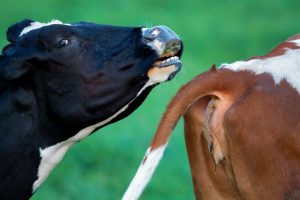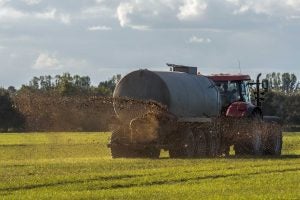Here we go again. Oatly, the plant-based alternative made from gluten-free oats and water is pulling another marketing tactic. This time, the company is “offering” dairy a free advertising space alongside Oatly’s to share their climate footprint numbers.
And while the challenge boasts “honesty” about Oatly’s climate and environmental footprint, carbon dioxide emissions are only part of the bigger picture when measuring environmental impact. Can anyone say fallacy of composition?
Milk Wars are in full swing. Ads in newspapers in recent days. 👇 pic.twitter.com/8ndU5m018N
— The Food Professor (@FoodProfessor) May 9, 2023
The advertisement, published in newspapers during the past few days, is catered to preach to the choir. But the smear campaign is pretty thinly veiled, and while we can all appreciate food choices, shouldn’t your product be able to stand on its own merits?
We should also probably mention that the Advertising Standards Authority reportedly followed up on complaints regarding a January 2021 European advertisement by Oatly using the slogan, “Need help talking to dad about milk?,” comparing their carbon footprint with dairy. In that campaign, the criticism was that they inflated the science related to a claim that, “Climate experts say cutting dairy and meat products from our diets is the single biggest lifestyle change we can make to reduce our environmental impact.”
The new campaign seems a lot like déjà vu, doesn’t it?
But of course they’re going for any hail mary they can muster. The milk-alternative company has seen its stock plummet 92 percent since summer 2021, partly because of its phony U.K. marketing claim as much as due to the juvenile and obnoxious Super Bowl ad its CEO released that turned many people off from the brand.
Dairy emissions are a complex issue
The dairy vs. plant-based debate circumstances are complicated, but we’ll start here since we’re specifically addressing the environmental impact by request of Oatly.
First off, dairy production contributes less than 2 percent of all greenhouse gas emissions. But greenhouse gases include methane, carbon dioxide, nitrous oxide, fluorinated gases, and even water vapor.
Jack DeWitt, a farmer-agronomist and writer of World Food Unlimited, shares that the carbon atom a ruminant belches comes from the carbon dioxide a plant initially took from the atmosphere. Once the plant is taken in, organisms known as methanogens use fermentation products for their growth and maintenance, releasing methane as a byproduct.
The cycle of ruminants consuming plants, which consume carbon dioxide, processing these plants, releasing methane from the rumen, and then that methane decaying back to carbon dioxide after 10 to 12 years has been going on for thousands of years.
Remarkably, cattle’s methane impact in the U.S. has significantly decreased over the past 50 years, and it continues to do so.
According to PennState, in 2014, the U.S. produced twice as much milk as it did 90 years ago, with about 60 percent fewer cattle.
In 2017, dairy used 30 percent less water, 21 percent less land, and had a 19 percent smaller carbon footprint than in 2007 to produce one gallon of milk.

Dairy farmers are pretty good at recycling and upcycling
Intense research over the last decade has not only driven a better understanding of the factors that drive enteric methane emissions in cattle but has also increased performance in dairy herds and technology.
In addition, businesses such as Brightmark Energy are creating solutions that turn animal waste into power. At Boxler Dairy Farm in New York, for example, the 3,500 milking cows produce manure for an anaerobic digester, which captures methane, eventually recycling it into power.
Dairy farming also contributes to crop production. Many dairy farmers reuse waste for other processes. Water used to cool milk is used to clean barns, and used water rich with manure is then used to water and fertilize crops, benefiting not only the crops themselves but the soil.
And what about feeding dairy cattle? Dairy cows can eat as much as 100 pounds of food and drink over 50 gallons of water daily. Dairy cattle eat byproducts humans cannot eat, such as citrus pulp, almond hulls, Brewer’s grain, and more, reducing food waste that might have otherwise ended up in the landfill.

Look at the label: Non-dairy milks don’t have the same nutrition as milk
Even if we were looking at CO2e per kg of dairy milk versus oat milk, dairy milk provides a big nutritional punch compared to many non-dairy kinds of milk. And it does that with a pretty short list of ingredients: milk.
Dairy contains 13 essential nutrients in each 8-ounce glass, over twice the protein compared to Oatly, a full mix of essential amino acids, and fortification with just vitamins A and D (not all other ingredients).
»Related: Editorial: When actions overshadow the products in the milk market


